Interview: Izumi "Mimi" Kobayashi
Izumi "Mimi" Kobayashi (below "Mimi") is an interesting artist from actually many perspectives. First, there is the one where she expresses original works as the leader of her own group, such as Flying Mimi Band. Another is as a member of bands such as with Masayoshi Takanaka, The Square (now T-Square), and Parachute, while in live performances or recording sessions she is a renowned funk keyboardist. She also has a composer side, contributing music for singers, TV commercials, plays, and movie soundtracks. She's also an arranger, a graduate from a music university, with a reputation of even handwriting orchestral scores. Yet her most known side might be as the songwriter of music for anime "Urusei Yatsura". Artists of such ambivalence being very rare, whenever talking of any of her specific works it has been a must to remind of her many roles.
Recently, Japanese city pop has been gaining popularity abroad even more than in Japan, and Mimi has a unique position. Japan's DJs digging groovy music have been rediscovering Mimi's records, and city pop's popularity has gained from that. Meanwhile, her name has spread overseas thanks to "Urusei Yatsura" and is famed in a future funk scene that's born from a blend of anime and city pop.
Since moving to London in 1985, the reporting of her activities back to Japan had been considerably reduced, to a point not long ago when it was fair to say that there was no information at all. However, two years ago I (writer Takashi Ikegami) published a long interview that got shared widely, finally communicating her roots, her work after moving to London, all the way up to her current activities. This led to planning a band-backed live show last May, however because of COVID-19 it was unfortunately postponed. This new interview aims at looking back on her career and also pursuing her particularities as a musician.
Looking at her career, it appears that Mimi has special powers to pull people together. After having started piano at 10, when reaching high school she got to play in dance halls and restaurants, and even government-related clubs. It's surprising that she was given work one after another in these places when still just 15. Amidst these, the army camp band she started playing with was a definite turning point. Following that and the legendary ASOCA, she debuted with Flying Mimi Band, and her name quickly started spreading in the industry.
— Let's start by talking about the army camp band. How did it happen for you to join that band when you were still in high school?
Mimi: The army camp was when I was about in 11th and 12th grade (approx. 17 or 18 y.o.). Back then I went to a Hammond organ class in Akasaka. A friend there was in the army camp band and asked me if I would take the place instead. That's how I entered. We played Ohio Players, Commodores, Earth Wind & Fire, and then some. The drummer was Yuichi Togashiki, who later invited me to join ASOCA.
— And ASOCA went on to become Flying Mimi Band, right?
ASOCA's vocalist Mr. Tanahashi first said we should form a band. Yuichi lived in Tokyo, while guitarist Takayuki Hijikata, bassist Morio Watanabe and I were in Chiba. We started as a copy band, playing Doobie Brothers and various rock tunes. Takayuki liked Jeff Beck, and Yuichi liked Stuff and other fusion. None of us thought of making a debut. We did many shows but with almost no spectators. (Laughs)
— Then you participated in the EastWest Amateur Band Contest in 1976 and won!
It was the first edition. Masayoshi Takanaka was a judge, and it seems like he remembered me and later invited me to join.
— Was EastWest the direct reason for your debut?
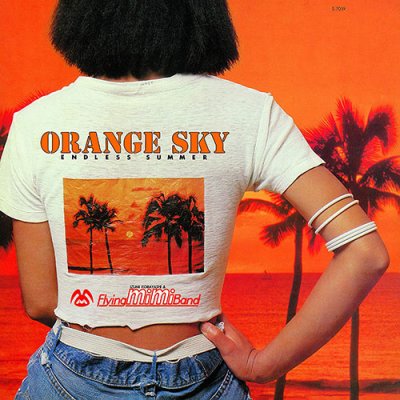
No. When in university, Masatoshi Nakamura asked me to play in his band for a tour. Stage manager Mr. Mashita was looking for new faces to make a debut on Sony, and so Rie Nakahara and I got released at the same time. It was supposed to be a solo debut, but as the other band members were great too I asked if they could be in the recording too and it worked out. That's how I debuted with "My Beach Samba". However the Sony person was doing idol work and it seemed that he wanted me to be an idol too, so I left and went to Phonogram. I had been recording my album "ORANGE SKY" (1978) at Sony, but Mr. Mashita canceled it.
— Was ASOCA still active around that time?
I think it was after EastWest that we talked about whether to continue. Mr. Tanahashi was going to join a company, and because the band couldn't do without the vocals we split up. By the way, Maki Kubota knew of ASOCA and when Sandii got to sing the theme song for the movie "Death on the Nile" she had ASOCA play the music (released as Sandy O'Neil "Mystery Nile" in 1978). It was our first studio work and I was very nervous. (No idea if it got used on the record.)
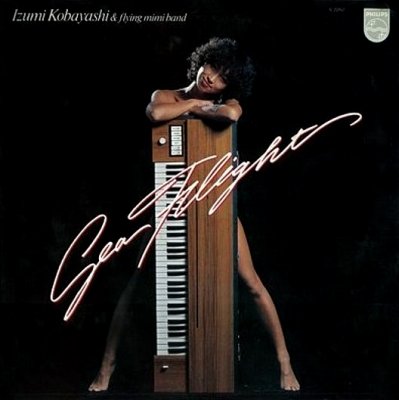
— Who chose the name Flying Mimi Band?
It was Mr. Mashita. He was a producer type, so he put effort into creating my image. It had to do with surf movement and music, so he told me to start surfing. (Laughs) And at Hawaii's North Shore of all places. I stayed a month in Hawaii while recording the 2nd album ("SEA FLIGHT" in 1978).
— How did Yasuaki Shimizu end up joining?
Yuichi was a favorite of Kiyoshi Sugimoto and bassist Akira Okazawa. Mr. Shimizu was in Mr. Sugimoto's band, so I guess Yuichi invited him to join.
— In Flying Mimi Band, almost all songwriting and arrangement was done by yourself. Wasn't that uncommon back then?
Akiko Yano was maybe the only other female. Ms. Yano was also on Phonogram. I was closer to Mr. Makoto Yano, and it's by working with him that I met Nobu Saito, which led to Parachute.
— On 2nd album "SEA FLIGHT" (1978), Mr. Yuichi Togashiki was replaced by Marty Bracey, right?
Yuichi was busy working with Mr. Sugimoto and couldn't keep up doing both. Marty was from the army camp, and although we hadn't played together our bands were often in the same event, so we had known each other for a long time. He was such a nice guy.
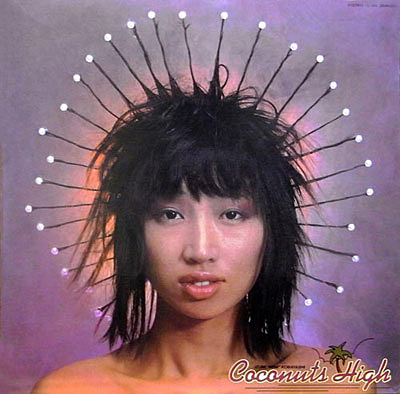
— Jumping forward to talk about your solo work. "Coconuts High" (1981) was recorded in L.A.?
Harvey Mason with the horns from Tower of Power, I decided all that. I went to LA and wanted to look for musicians there, so I went to see shows, and when I found someone I wanted to play with I'd go backstage and ask. That made the label upset though. (Laughs) Musicians in the U.S. seemed very skillful to me. Abraham Laboriel was amazing. I brought sheet music that I wrote, and he'd play it perfectly at first sight. So did Alex Acuña.
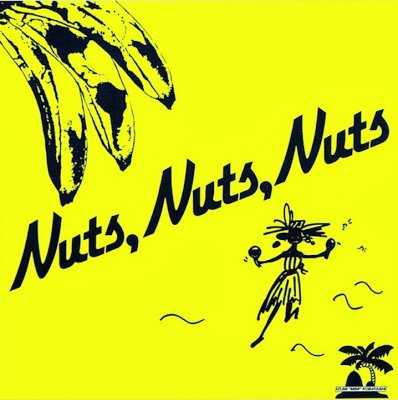
— In your later albums, the sound changed completely, didn't it?
Being that I'm an instrument maniac, on each album you can tell what instrument I liked around then. In Mimi Band, it was clavinet and organ. In "Coconuts High" I used a Prophet 5. On "Nuts, Nuts, Nuts" (1982) I thought I'd use more programming.
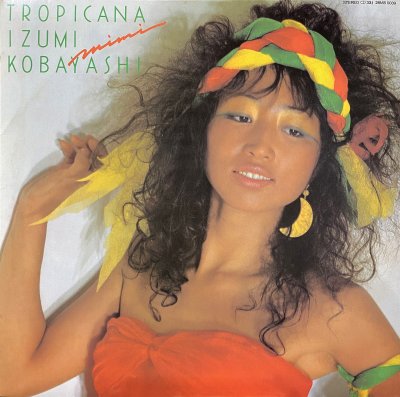
— But the song "Gypsy Love" on "Tropicana" (1983) sounds like kayōkyoku.
On "Nuts, Nuts, Nuts" there's "Coffee Rumba". I like this also, like typical latin kayō. Like "Adios" (1979) that I wrote for Noriyo Ikeda, and Helen Sasano's "Kokorobosoi na" (1982). It doesn't show up in my own works, but as a songwriter it's a side that I want to express.
1979 was Mimi's first year of stepping up. She did her debut with a band she led, and on the other hand she also got more work in the studio. Meanwhile, instead of being asked to play in a band for a single show she'd be asked to be a regular member on tour, and also she got work as a songwriter, making her active in several directions. Almost all at once, she got invited to play in Parachute, which was formed of top studio musicians, as well as up-and-coming fusion band The Square, and also Masayoshi Takanaka's band. All of that made music listeners recognize Mimi as a player.
— After Flying Mimi Band, you were in Mr. Takanaka's band for a long time.
My other work being busy, Mimi Band sort of faded out naturally. I also played in the back band of Hiroshi Tachi. I'd accept any work offer. At first Takanaka was also about playing live shows, not recording. And almost at the same time, I had Square and Parachute too.
— You didn't do any recording with Square did you?
We didn't. We played as the back band for a tour of Yuming, the one in which an elephant shows up ("OLIVE Tour" in 1979). Once the tour ended, I was asked to become an official member, but I also had Parachute and Takanaka, and the schedules were conflicting so I had a tough time deciding.
— On the other hand, Parachute recorded just one album.
We didn't do any show, but there was a strong feeling to make Parachute a band, so we even did band camp. It was fun. All of us had been doing so much studio that we starved to be in a band.
— In the end what made you decide to stop everything else for Takanaka?
It was around that time. I had been to a fortune teller, unable to make a decision. And perhaps I was told "Takanaka"? But in terms of music it's what felt right, not having to force it. There was a bit of Latin feel, and I liked the songs.
— And you continued for quite a long time, right?
3 or 4 years maybe. I played on several tours. It was just around when Takanaka had growing popularity. Kitty president Hidenori Taga was really into it, so we did tours of all of Japan, we got to invite Santana (August 2, 1981 at Yokohama Stadium), and a bit before that we played two consecutive days at Budokan.
— That was for "The Rainbow Goblins". That was crazy!
Around that time Takanaka had trouble writing songs. He had gone famous and the label president would tell him to write more and more. Songs were finished and we only had about 4 days of practice, and then Budokan. We made most of it at Kitty's Izu studio. In Ikejiri-Ōhashi there was Polydor's studio, and Kitty had a studio in Aobadai. That's where I recorded "Urusei Yatsura".
In general, Izumi Kobayashi is best known for "Urusei Yatsura", and the work she did here went right into popular culture. Mimi wrote and arranged the lead song "Lum's Love Song", and despite being sung by Yuko Matsutani (although the catchy "uffun" and "ufufufu" phrases were by Mimi herself) it's a rare thing for a song to be credited to its composer. At the time Kitty put strength in movie soundtracks, and for that Mimi got a lot of work in which she showed remarkable originality. Soundtracks let her music skills as a composer and arranger surface.
— While still playing with Takanaka you started doing movie and anime related work. What triggered this?
For "Urusei Yatsura", Kitty president Hidenori Taga called me to his office and asked me "do you know this manga?" It was a manga that I had loved it since when it was published in Shonen Sunday, so the next day I wrote three songs and they were all accepted. Nevermind it had only taken me 10 minutes. (Laughs) "Lum's Love Song" must have sold about 500,000 copies. But because of the 16-beat syncopation, Mr. Taga had criticized that it was a difficult song. Still I didn't do any change, and it was left as I wrote it. Recently, Mr. Fumitaka Anzai with who I worked on "Lum's Love Song" posted a demo of it on the Internet.
— Mr. Anzai is the one who first brought a Fairlight CMI to Japan, right? Did you first use it on "Urusei Yatsura"?
It was used in the movie ("Urusei Yatsura Only You" (1983)). Maybe he wasn't the first, but one of the very first. At Baku Studio in Nishi-Azabu, with Mr. Anzai and Mr. Masamichi Amano, we'd do a sort of Fairlight research get together every night or so. That's where we recorded "Urusei Yatsura". Also, I believe that "Lum's Love Song" was the first song in Japan to use a Linn Drum. I had gone all the way to LA myself to buy it. I think it wasn't yet being imported at the time. Perhaps that was when I went for the recording of "Coconuts High".
— Then you also did the music for "sasuga no sarutobi" (1982) and "Stop!! Hibari-kun!" (1983).
There was also BGM, so I did really quite a lot. I also did many TV commercials, such as for Kanebo (cosmetics brand). Because the image of my music being clearly defined, summery and bright and fluffy, I got many offers. My favorite commercial was the one for Hankyu department store's oseibō (year-end gifts). I wrote the scores for orchestra, horns and chorus, and it was recorded in one take all at once. I wasn't playing so I was in the control room, and as soon as I heard the sound I was in awe. Also I got to do the music for a sort of contemporary dance play at the Dance Theater, and I scored 60 minutes for a string quartet. I like this kind of opportunity.
— These let yet another face of musicality show through.
Exactly. Holger Hiller had heard that score and did a request to take it to Europe. At the time there were many of my works without my name on, so I put those together on a cassette tape myself and sent it to artists overseas. Because I wanted to get out of Japan. (Laughs) Then I received two offers, one of which was from Narmada Michael Walden, though I let it pass... Holger Hiller's included even a visa and plane ticket. This is when my life changed completely. It was a sayonara to my career in Japan. I still remember very well, on March 11, 1984.
Having moved to London, Mimi soon got work to do, and her career abroad moved on fine. Later she gave birth, and then she shifted her work towards coordination. Because it was a time with no Internet, for the following 30 years there was nearly no reporting in Japan of her activity. But another recent interview I did with her proved that she still has a big reputation. And now she is still based in London where she has started playing music again. This has already been gaining much attention locally, which again gives hint that she has a special power of appeal.
— Was it alright for you to leave Japan so suddenly?
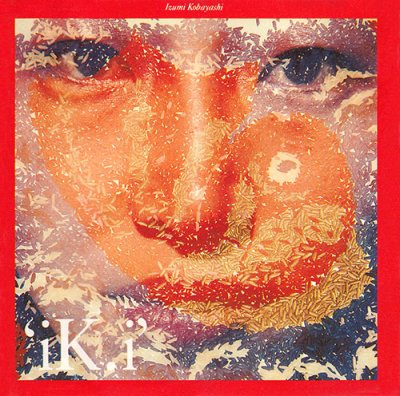
Just no one said anything. (Laughs) I still had a contract with Kitty, but Mr. Taga said "You should go!" He even paid for my rent for a while. So generous. Then later I said "I'll make an album so please pay for it", and I made "iK.I" (1989). It was so completely different from what I had done before, what a surprise. (Laughs) Kitty owns the masters but it was released by WAVE.
— When you went abroad for Holger Hiller's tour, did you plan to come back to Japan?
Yes. I thought I'd go for about half a year and then come back, but then there was Mathilde Santing, Swing Out Sister, and Depeche Mode. I had several opportunities in a row and kept busy.
— You played on Swing Out Sister's "Breakout" (1986), right?
Yes. Also, Depeche Mode sold 3 million copies ("Enjoy The Silence (The Quad: Final Mix)" (1990)). I also did a bunch of other things.
— Then you gave birth to your son, and your musical activity stopped.
Oh, before that I also did RPO (Reggae Philharmonic Orchestra). I also toured Jamaica for a Bob Marley cover compilation ("Marley Classics" (1991)). Then from 1993 I also did Moves In Motion, which I started with Tony Nwachuku who did the programming in RPO.
— And then you became company president. (Laughs)
When Toy's Factory began distributing Ninja Tune, I prepared all of the promotion material for Japan, then for Sony I did R&S and Warp, I did all the techno around there. I also promoted Takkyu Ishino (Denki Groove) in Europe, and I did project coordination for Dentsu and NHK. Around 1989 I started my own company named UMU Production. Later in 1997, Cisco asked me to make a branch in London.
— Didn't you ever feel like doing music during that time?
Not at all. I was busy and didn't play much piano. Then once my son went on his own, I started making music again, in 2016. Luckily I now get a lot of piano work in London.
— There's also that band of African music that's popular in the UK now.
The Scorpios. We first started as a trio with people from Sudan and UK, then when we thought of making it a band, Ronnie Maxwell who played bass in RPO got in touch after over 10 years, and it started. On top of a rhythm section of four, there are two playing African percussions, and then some, it's a large band. We play Sudan traditional music and children's songs. We're popular in the UK, and every time we play a show the audience gets bigger. In London, there are jazz cafes and when we play there it makes people go "ohh!" (Laughs) When we played in March before the lockdown it got really packed, and it was very energetic. A new album we recorded in Abbey Road Studios will be released very soon. Also, I want to make a new solo piano recording this year.
Live information:
Friday, November 20, 2020
Takashi Ikegami presents City Pop Connection Vol.7: Izumi "mimi" Kobayashi from London
at Blues Alley Japan
Featuring:
Keyboards/Vocals - Izumi "mimi" Kobayashi
Guitar - Takayuki Hijikata (ex-Flying Mimi Band, ex-Mariah)
Bass - Akihiro Tanaka (ex-Masayoshi Takanaka band, Shigeru Suzuki & Huckleback)
Percussions - Makoto "Kimchi" Kimura (ex-Masayoshi Takanaka band)
Drums - Marty Bracey (ex-Flying Mimi Band, B-EDGE)
Keyboards - Kaoru Inoue (Blue Peppers, Masayoshi Takanaka band)
Chorus - Yasunoji, Natsu Summer
Pricing & Reservations: Blues Alley Japan
Live streaming via Streaming+ (by e+)
Izumi "Mimi" Kobayashi official information:
Twitter: @MimiKobayashi1
Comments
can i translate this into chinese?it will be great if i can share this article with other people that like Kobayashi Izumi in China.if this request is offened,im so sorry in advance!
Posted by percy on May 19, 2021 at 12:59
This was such a great interview, thank you so much! I had no idea she won the 1976 EastWest comp. I have the 77' on LP which I treasure quite a lot, so that was very interesting to read!
Posted by Blutsvater3 on January 24, 2024 at 12:13
bajweb.png)